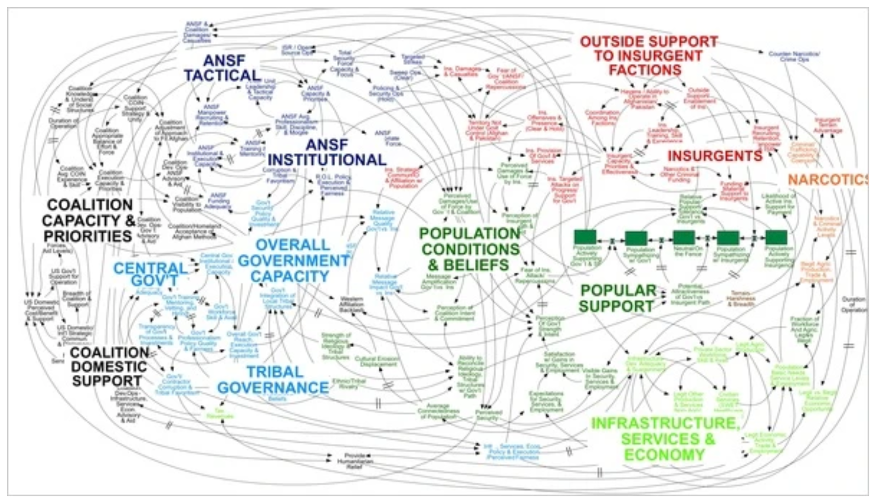
2020 has taken a toll on all of us in one way or another. For those businesspeople who work from home, the pandemic has greatly exacerbated PowerPoint and zoom fatigue. Countless studies have shown that video conference interaction is not a proper substitute for in-person interaction (though the risks of this still outweigh the rewards), and more video conferences tend to lead to more PowerPoints, which, if done the wrong way, can increase feelings of isolation because screens are taken up with slides like this:

The above PowerPoint diagram (meant to portray the complexity of American strategy in Afghanistan) has been dubbed “the Spaghetti Slide” and has attained a level of infamy in data presentation circles as a slide that not only is pointlessly complex but also inspires high levels of stress and dread. If I could go trick-or-treating this year, I would be this slide.
We at Tech Essentials would much rather eat spaghetti than see it in slide form. Recently, we shared the benefits of live interaction – with eye contact – and the science behind the benefits of live presentations. With technology today, in particular with today’s distracted, multi-tasking society, presentations need to entice an audience simply to keep their attention. Audiences are often wondering when the session will end or are fiddling with their handheld devices throughout a presentation. You don’t connect with your audience with a firehose of information flow — you do it by taking them on a journey toward your perspective.
Below are some tools and tips we thought we would share that we have employed as a company, to help build new and nurture existing connections in today’s remote work environment.
1. Video Meetings. The power of the human face in interactions is impactful; so impactful, even a well-placed emoji can trigger a subconscious connection with the audience (read the science behind it here). But video meetings can be overdone or not done well enough. We have found the optimal session includes video discussion in the beginning without a PowerPoint or screen share, followed by substance with a screen share, and closing with video. Try it (but remember, look at the video camera when you speak, so they don’t stare at your cheek!).
2. Virtual Eye Contact. In these video meetings, try not to look at your second monitor, but at the dot of the camera, at least when you are speaking and trying to get your message across. Eye contact has impact in video meetings, just as it does when in person (read the science behind it here).
3. Dissolve the “Fight or Flight” instinct. This may seem obvious, but a big smile in the first seconds of a video session and positive head nodding while other people are speaking chemically triggers favorable emotions. Your ability to virtually cue your staff, clients, or prospects into life-is-good mode can fantastically improve your business success – especially in these uncertain, virtual, and isolated work-from-home times. When you engage in a positive way, as Dr. Jonathan Silk, a decorated Army veteran, purple heart recipient, and CEO of business coaching firm, Bridge3 explains, the people you are virtually interacting with benefit from a surge of oxytocin hormone levels, which is the neurotransmitter in their brain that supports bonding behavior and positive emotions associated with trust.
Of course, much of our interaction is done with written correspondence — for that you should use (at least when important) services like RMail. For professional services, insurance, and law professionals who communicate with clients, you should know that RMail Encryption’s visual cues give the recipient (your client) peace-of-mind that their information (what you are sending to them and what you may send to others related to their matter) is secure, and it demonstrates to them that you care enough about them that you would go through extra steps to keep their information private, always.
Know More:
Have a safe and happy Halloween weekend, and don’t forget to turn those clocks back an hour on Sunday!
RMail®, Registered Email™, Registered Receipt™ and Legal Proof® are registered and unregistered trademarks owned by RPost Communications.

December 26, 2025

December 19, 2025

December 12, 2025

December 05, 2025

November 21, 2025